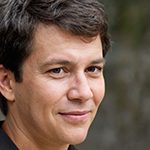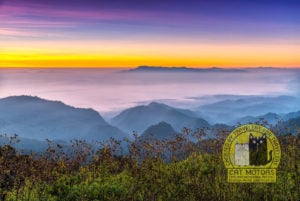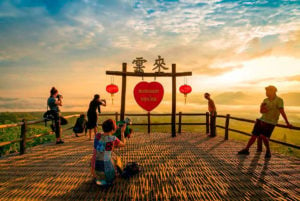Discover Bhubing Palace: Chiang Mai’s Regal Retreat
Bhubing Palace is the Thai Royal Family’s winter residence, and it also goes by the name of Phra Tamnak Phu Phing (or Phuping Palace). The palace is located in Doi Buak Ha, on Buak Ha Mountain, in the Doi Suthep-Pui National Park. The park is in the Muang District of the Chiang Mai Province, just north of Chiang Mai.
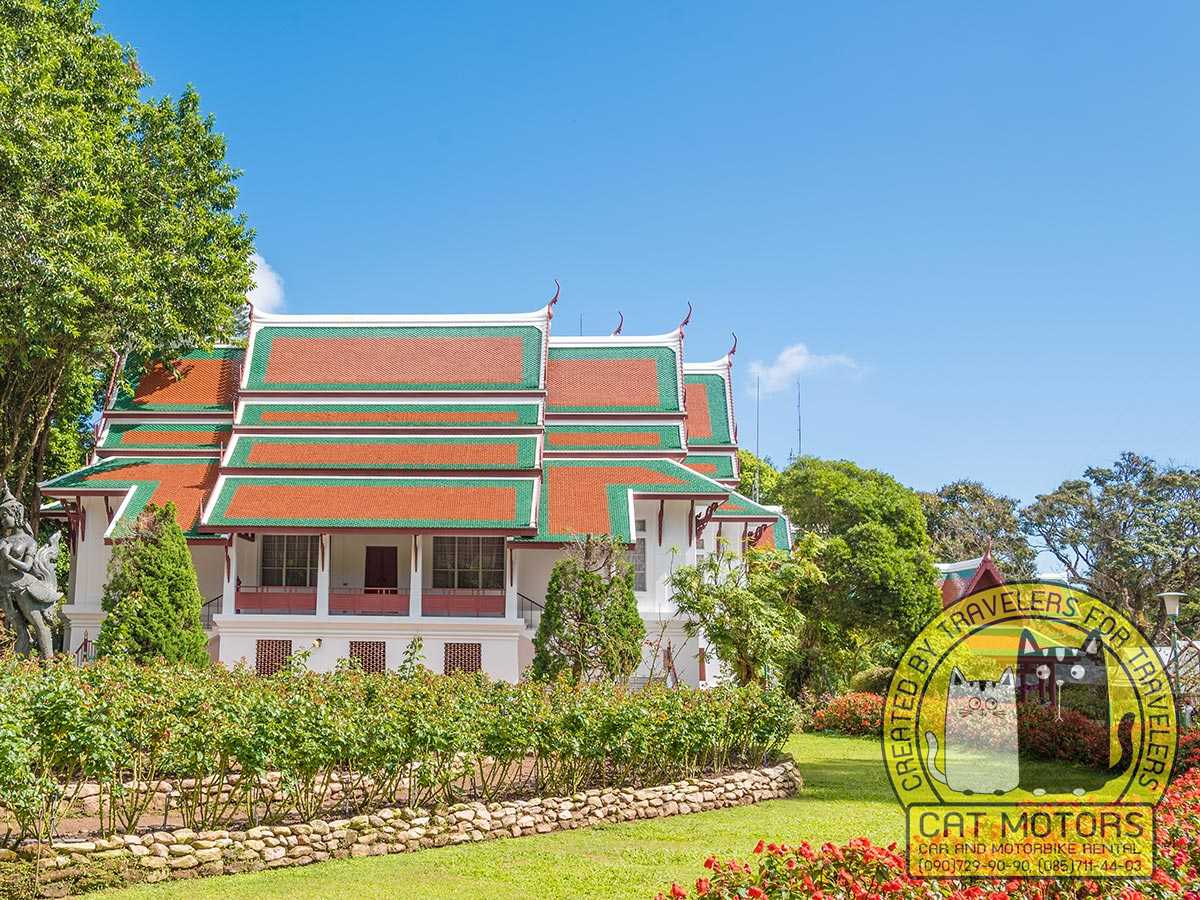
The palace is well-known for its beautiful location, views, gardens, and interesting architecture. As a result, many tourists review Bhubing Palace as a pleasant place to visit if you are in Chiang Mai or the northern part of Thailand for a few days. Still, it’s not necessarily a “must-see” place unless you love roses, orchids, and pretty gardens.
Read on to discover what to expect should you wish to visit the Thai royal residence.
History and Design of Bhubing Palace
The main building of the royal palace is called Phra Tamnak Phuping Rajanives. It was built in 1961 over 5 months. The primary function of Phra Tamnak Phuping Rajanives is to house the royal family in the cooler winter months, plus dignitaries visiting the area. The very first dignitaries to visit the palace were King Frederick the Ninth and Queen Ingrid of Denmark in 1962.
The palace was built under the watchful eye of Prince Samaichalerm Kridagara in a Thai architectural style called Ruean Mu, meaning ‘group of houses.’ Each building is on stilts and serves a different function. For example, in the main building, the upper floor serves as the royals’ residence, while the ground floor is for the royal entourage.
Additional buildings have been erected over the years, including separate guesthouses for foreign dignitaries visiting Chiang Mai.
Palace Grounds and Gardens
The palace grounds are expansive, housing numerous buildings and a landscaped garden with many different themed areas. While visitors aren’t usually allowed into the buildings, they can admire the traditional Thai architecture from the pathways. There are many ‘no entry’ signs around the property to keep visitors on the paths in the gardens.
It is only under rare circumstances that tourists are allowed to see the interior of the palace buildings. However, they are encouraged to admire external building features such as the ornate structures, elegant rooflines, and delicate structures of the palace. Also within the palace complex are statues, pavilions, and strategic viewpoints that provide panoramic vistas of the surroundings.
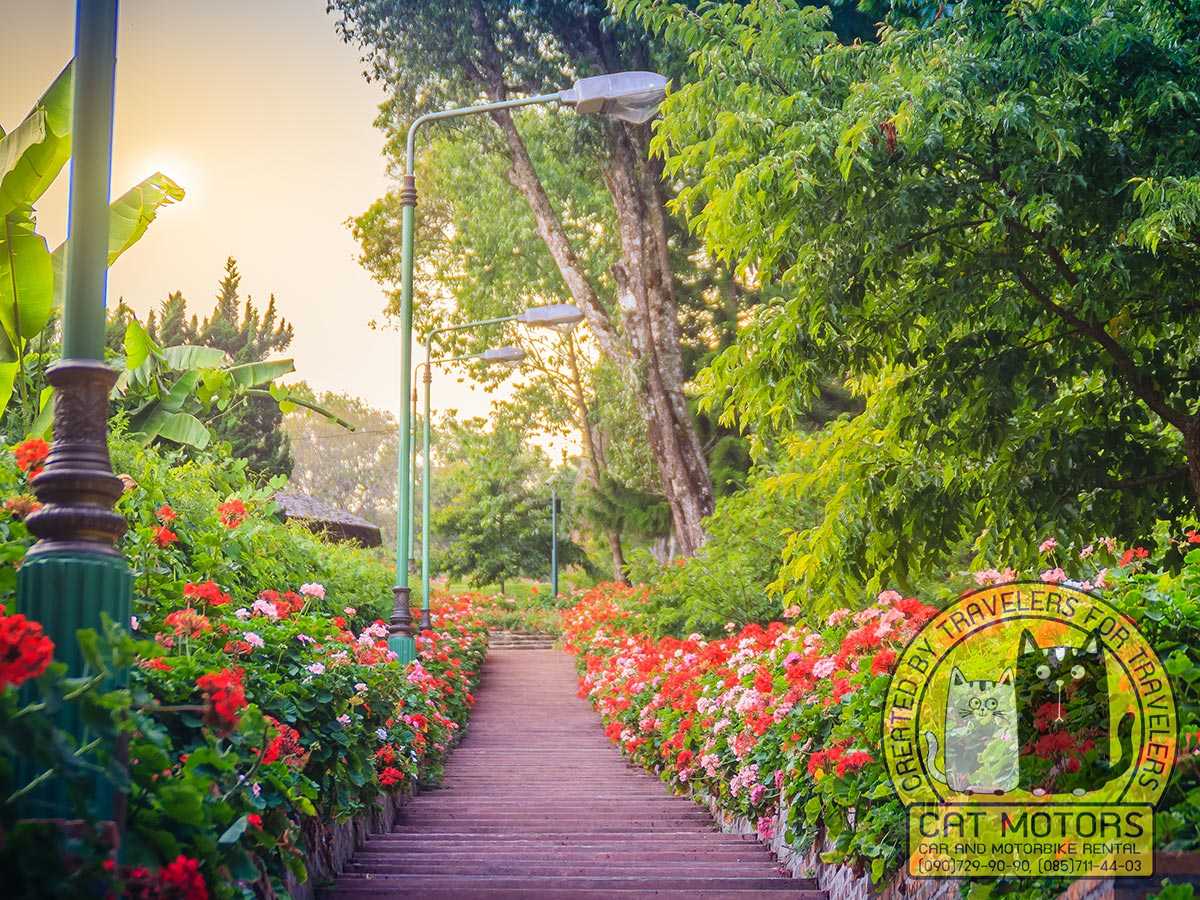
As can be expected with a royal residence, the palace gardens are meticulously maintained. The lawns are well-manicured, and there are winding paths for visitors to explore the various gardens and enjoy the vibrant flowers. For instance, you will see a wide array of orchids, a large bamboo garden, the Suan Suwaree rose garden, imported temperate plants, and the reservoir.
This is what you can expect when meandering around Bhubing Palace’s grounds:
Suan Suwaree Rose Garden
The Suan Suwaree rose garden was created to commemorate the late La Suwaree Taepakam. It is located at the top left section of the palace grounds. The Suan Suwaree rose garden houses 274 types of roses from around the world. Given the cooler mountain air, it is a prime spot for roses to grow.
Smaller plants and flowers line the rose gardens and pathways. You are welcome to admire the roses, but leaving the designated trails for tourists is forbidden.
Hor Phra
Hor Phra, also known as the Royal Pavilion or Royal Shrine, is a significant structure within the Bhubing Palace complex. Featuring traditional Thai architectural elements with intricate carvings and ornate decorations, Hor Phra serves as a site for religious ceremonies and rituals involving the royal family. It often houses important religious artifacts and images, contributing to its cultural and spiritual significance.
Located within the beautifully landscaped grounds of Bhubing Palace, Hor Phra is accessible to visitors when the palace is open to the public. The serene and sacred atmosphere of the shrine, surrounded by gardens, offers a glimpse into the spiritual life of the Thai royal family and the rich cultural heritage of the region.
Phra Tamnak Phrueksa Wisuthikhun
Phra Tamnak Phrueksa Wisuthikhun, situated between the rose garden and the reservoir, is an essential part of the Bhubing Palace complex. This double-story building showcases a blend of Central and Northern Thai architectural styles and was designed by Mom Rachawongse Mitrarun Kasemsri. Originally, it served as the royal residence of the late HRH Princess Sri Nagarindra, the Princess Mother.
Today, the building continues to provide a comfortable and elegant living space for the Thai royal family during their visits to the northern region. Surrounded by beautifully landscaped gardens, Phra Tamnak Phrueksa Wisuthikhun offers a tranquil retreat and can also accommodate official guests and host small-scale royal events. The combination of its strategic location and exquisite design makes it a perfect sanctuary for relaxation and contemplation amidst the natural beauty of Chiang Mai.
Phra Tamnak Payak Sathit
Phra Tamnak Payak Sathit is a log cabin constructed with eucalyptus wood in 1993, located in the uppermost left part of the Bhubing Palace grounds. Her Majesty the Queen ordered its construction for His Royal Highness Crown Prince Vajiralongkorn. This unique building combines traditional Thai architectural elements with the rustic charm of a log cabin, blending seamlessly into the serene and lush surroundings of the palace complex.
As part of the royal residence, Phra Tamnak Payak Sathit offers a tranquil retreat for the royal family during their visits to the northern region. Its strategic location and thoughtful design make it a key component of Bhubing Palace, reflecting the elegance and cultural heritage of Thailand.
Phra Tamnak Siri Song Nakornbing
Phra Tamnak Siri Song Nakornbing is another eucalyptus log cabin on the palace grounds near the reservoir. Construction of this cabin commenced in 1991 and was completed in 1992. The cabin is commonly called “Phra Tamnak Eucalyptus” and was built according to the instruction of Her Majesty the Queen as an exercise in observing the use of eucalyptus wood in construction.
Water Reservoir
The water reservoir is a catchment area for water in the upper central parts of Bhubing Palace’s grounds. Next to the reservoir, you will see a teak wood gazebo, carved totem poles, and beautifully landscaped gardens. In the reservoir is a musical fountain called “The Fountain of Celestial Water of People.” There are many places to sit around the reservoir; however, shade is lacking.
Pha Mon Pavilion and Fern Garden
The Pha Mon Pavilion is a teak wood pavilion surrounded by a fern garden. The fern garden was established in 1993 and is a collection of indigenous ferns and tree ferns as old as 100 years.
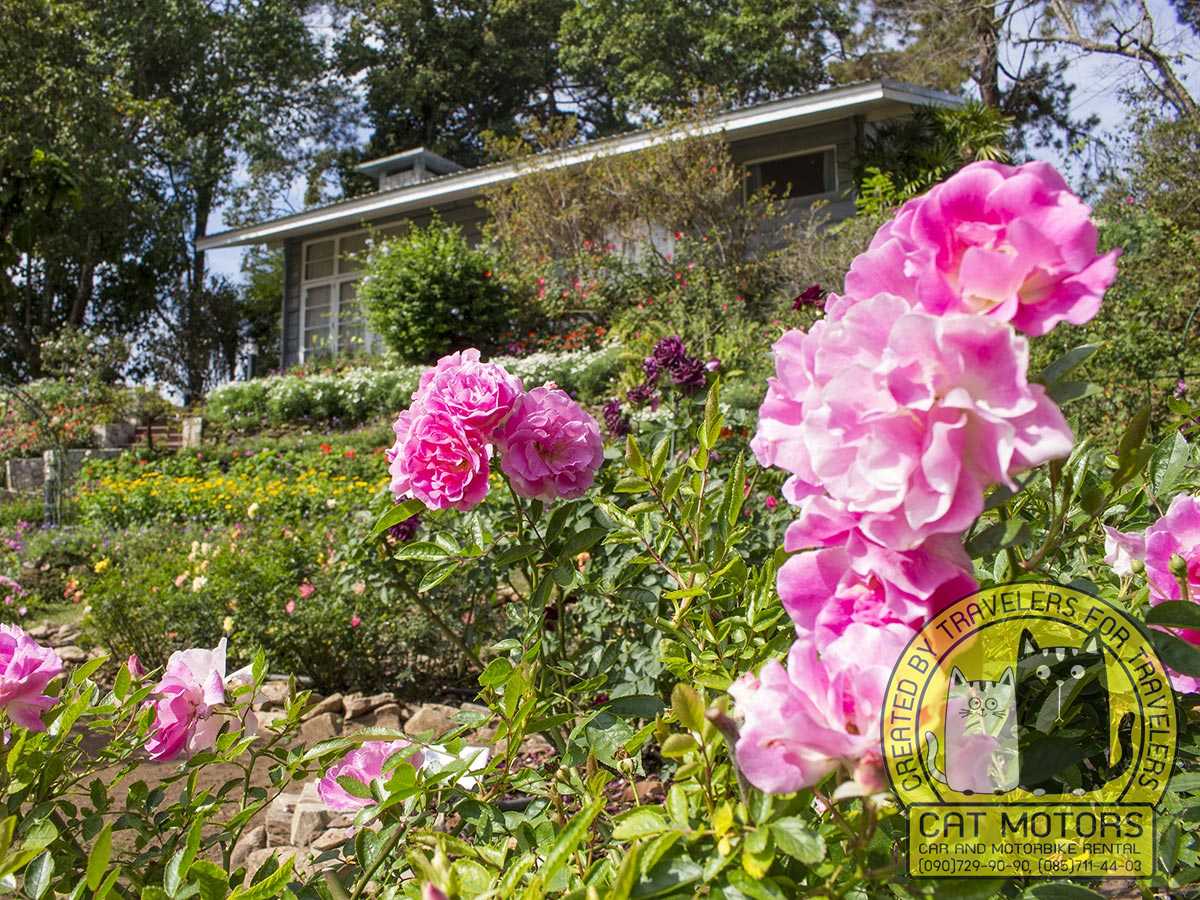
Before the royal feast pavilion existed, there was a hill-tribe style thatch-roofed bamboo hut that was used for informal dinners and royal recreational activities.
Phra Tamnak Bhubing Rajanives
Phra Tamnak Bhubing Rajanives, also known as Bhubing Palace, is part of the royal residence complex located on Doi Suthep Mountain near Chiang Mai. Built in 1961, the palace serves as a winter residence for the Thai royal family and is used for receiving foreign guests. The palace’s architecture combines traditional Thai style with elements of the northern Lanna, surrounded by well-maintained gardens with rare plants and orchids.
Visitors can enjoy walking through the picturesque gardens and taking in the views of the surrounding area from an elevation of about 1400 meters above sea level. While the palace is open to the public, access may be restricted during the royal family’s stay.
Ruen Rab Rong
Ruen Rab Rong is a double-story royal guesthouse built in the modern Thai style. The guesthouse is used for royal visitors, senior palace aides, and members of the royal entourage. Ruen Rab Rong is also the waiting area for guests invited to attend royal banquets or granted a royal audience.
Ruen Peek Mai
Ruen Peek Mai is a log cabin that serves as the seasonal residence of Her Royal Highness Princess Chulabhorn. It is also used as a royal guesthouse.
Other Interesting Features
Walking around the palace grounds, you can explore other interesting features and areas not specified on the palace map. For instance, a tropical rainforest area offers a big shaded area with many places to sit and rest. Be cautious here, though, as there are many steps that can be pretty slippery.
There is also a section with giant Burmese bamboo close to the cottages. The colorful bamboo creaks and sways in the wind, providing an eerie feeling if you are alone.
Interior of Bhubing Palace
As fascinating as it would be to explore the palace interior, it is unfortunately not open to the public. Only the Royal Family, their entourage, and guests are allowed in the buildings, so little is known about the décor inside the palace. The only interiors you will see on the property are the ticket room and the restrooms for visitors.
There are many security guards on the premises and many No Entry signs to keep visitors from straying into sections where they are not allowed. Some external tour operators advertise that you can go inside the palace buildings, but this is not the case.
Visiting Bhubing Palace
It is worth noting that Bhubing Palace is not open all year round. There are many times when the palace grounds are closed or portions are off limits due to members of the Royal Family visiting. They usually visit from January through to March every year.
Therefore, it’s a good idea to confirm with a local authority or tour operator to see if it is open before making your way to the palace. They will tell you about the up-to-date visiting hours, arrangements, and accessibility to the palace grounds.
If the palace grounds are open, the visiting hours are 8:30 to 16:30. However, the ticket office is closed between 11:30 and 13:00. The entrance fee to the palace grounds is 50 Baht for foreigners.
One of the entrance conditions is that all visitors must ensure their knees and shoulders are covered (scarves don’t count as shoulder covering). You will be turned away at the security gate if you aren’t suitably dressed. However, there is a solution nearby. At the little village market opposite the entrance is a shop selling and hiring out loose-fitting clothes.
Here you can hire clothes to put over your existing outfit to cover up your knees and shoulders. Clothing hire is 20 Baht plus a 100 Baht deposit per item. The items are clean and oversized, so you will likely find something that fits. Even though the clothes might not suit your fashion sense, there is a good chance you will be in good company with other similarly-dressed tourists.
Getting To The Palace
To get to Bhubing Palace, you must take Huay Kaew Road, which runs past landmarks such as the Chiang Mai Zoo and Wat Phra That Doi Suthep. You can hire a scooter and ride there or catch a red truck (songthaew) that can take you there and back.
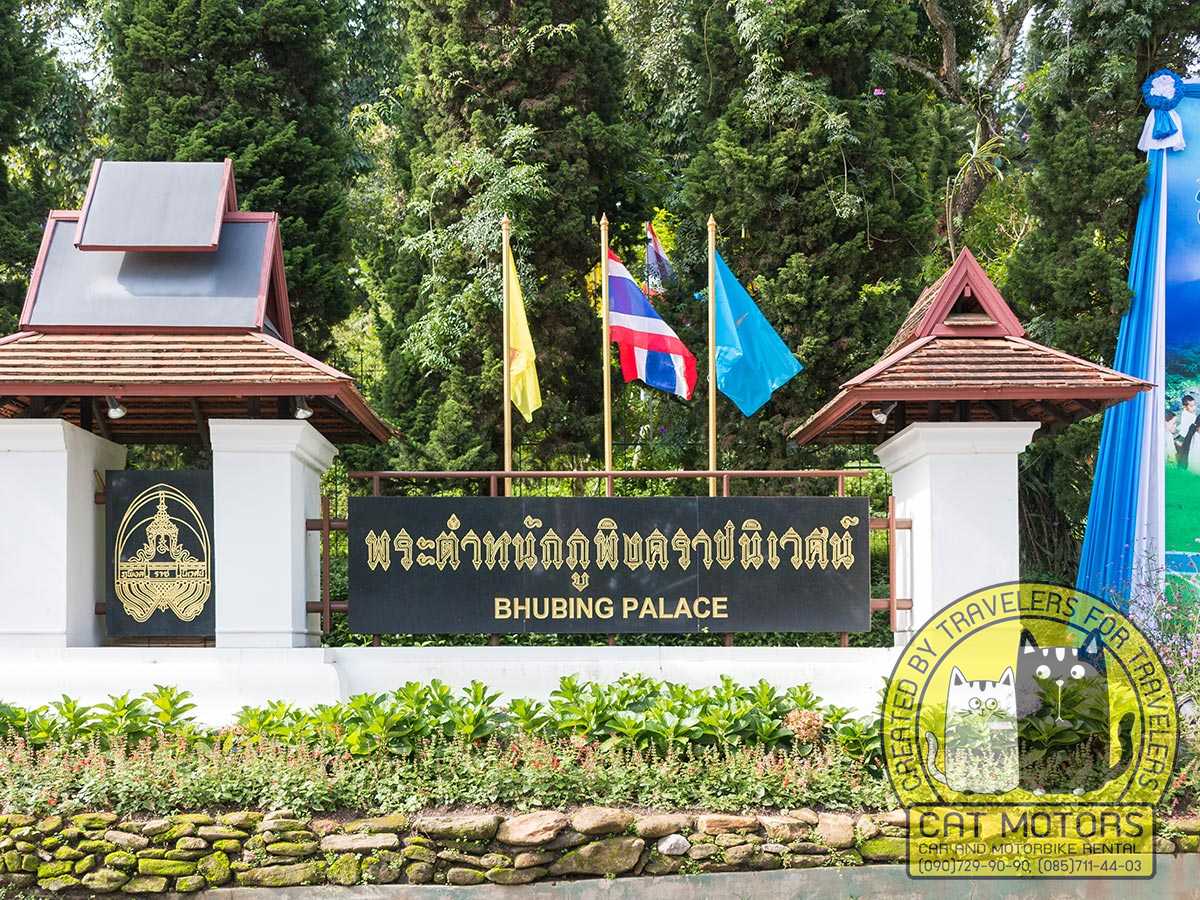
The cheapest place for catching a Songthaew to the palace is at the Chiang Mai University or the Chiang Mai Zoo entrance. The fares are usually fixed from these places, depending on your destination. However, to Bhubing Palace, it should cost you about 40 Bhat.
The only drawback to catching a Songthaew is if you want to grab one during an off-peak season. During these times, you will likely have to wait until there are 10 people to get the cheapest rate. Be prepared to haggle fares if you are in a hurry. The journey should take about 30 minutes from either of these points as the road to the palace is steep and winding and sometimes shrouded in heavy mist.
Nearby Attractions
To enhance your trip when visiting Bhubing Palace, consider the following nearby destinations too:
The Tiny Village Market By The Palace Entrance
Outside the palace grounds is a small village that caters to the tourists to the area. As mentioned, you can hire clothes before entering the grounds to make yourself more presentable. However, after you visit the palace, you can explore the little village while waiting for your Songthaew to collect you.
The locals sell food and drinks, a variety of souvenirs and crafts, plus jewelry and clothes, like elephant pants.
Wat Phra That Doi Suthep
Wat Phra That Doi Suthep is considered one of the more sacred temples in Chiang Mai. It was built in the early 19th Buddhist century and is marked by statues of seven-headed serpents. This temple is so special because it has relics of Buddha enshrined there, which are worshipped during the Tiaw Khuen Doi Festival.
To see the temple and its amazing Lanna architecture, you need only travel 11 minutes further up Huay Kaew Road from Bhubing Palace. The temple is situated on a hill a mere 11km (6.8 mi) from Chiang Mai’s city center. You can get there by car, scooter, Songthaew, or hiking through the Doi Suthep-Pui National Park from the palace.
If you can’t walk up the stairs to the temple, you can take the electric tram, up or down. Just remember to take photos, as the scenery from this vantage point is spectacular.
Chiang Mai Zoo
Chiang Mai Zoo is situated between Bhubing Palace and Wat Phra That Doi Suthep. It is home to panda bears, white tigers, meerkats, and other interesting species. There is also an aquarium with exciting water creatures, an African section, and a bird park with an aviary spanning 6 acres.
The adult entrance fee is 150 Baht, while the children’s fee is 70 Baht. However, this only grants access to some of the sections, so getting a package deal through a tour operator might be worth your while.
Hill Tribe Village
The Hmong Hill Tribe Village on the outskirts of Chiang Mai is a fascinating place to visit if you are interested in ethnicity. Some tourists call this a human zoo, while others are touched by the experience of visiting the locals. The locals earn a living by showing off their interesting traditions. Many are refugees from China or Laos.
It will cost about 500 Baht to visit the Hill Tribe Village, but the money goes to helping the locals. They are friendly and colorful people, always smiling and selling hand-made wares, e.g., scarves. The ladies of the Karen Tribe are called Long Necks because of the metal rings they use to lengthen their necks as they grow up.
You can visit the Hill Tribe Villages by yourself, but it might be helpful to go with a tour operator who can translate for you. You might even be treated to a meal made from produce foraged from the surrounding jungle while you enjoy this unique experience.
Quick Facts
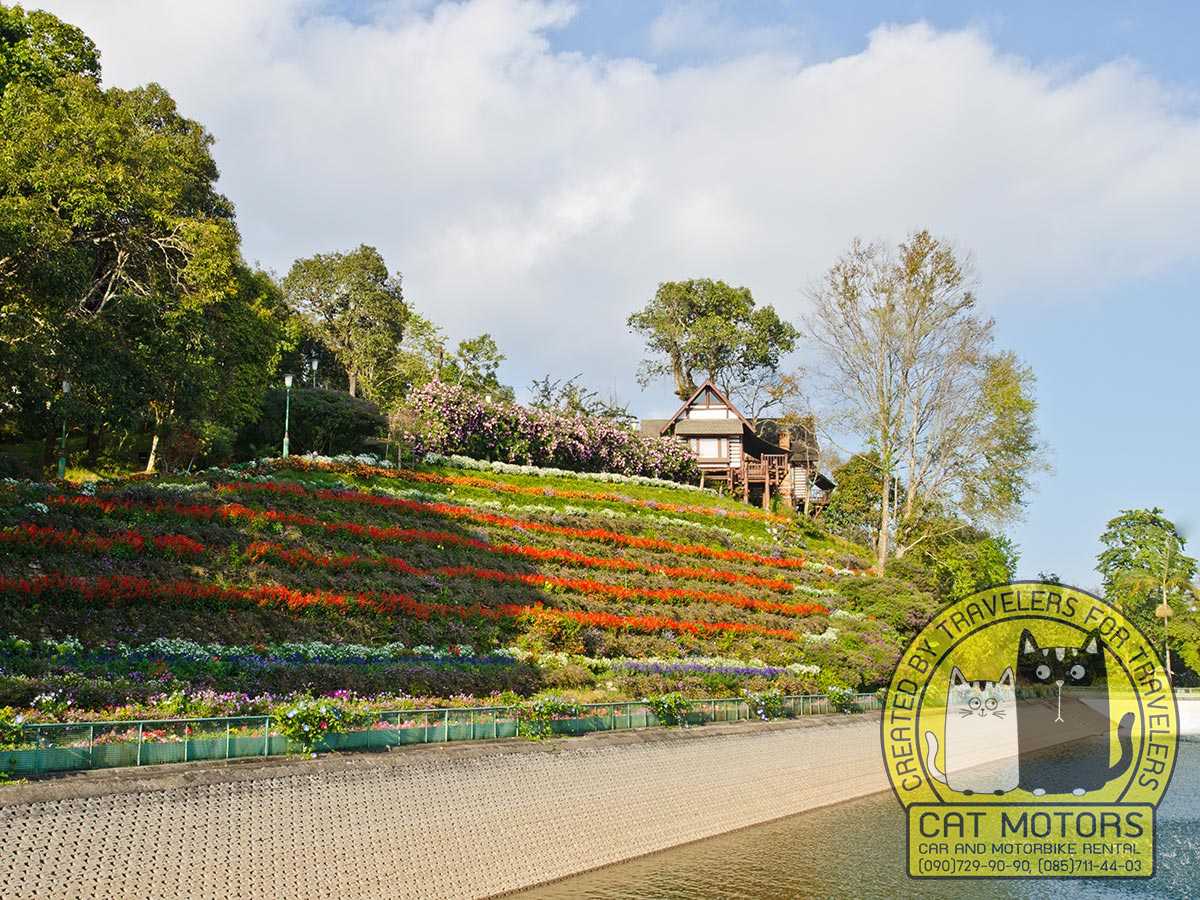
1. Royal Residence: Bhubing Palace, also known as Phu Ping Palace, is a royal residence located in the mountains near Chiang Mai, Thailand. It serves as the winter residence of the Thai royal family.
2. Scenic Location: The palace is situated on Doi Buak Ha, a mountain in the Doi Suthep-Pui National Park, approximately 16 kilometers (10 miles) northwest of Chiang Mai city.
3. Lanna Architecture: Bhubing Palace showcases traditional Lanna architectural style with its elegant buildings, intricate woodwork, and ornate decorations. It is a blend of Thai, Chinese, and European influences.
4. Beautiful Gardens: The palace is renowned for its well-maintained gardens filled with vibrant flowers, lush greenery, and manicured landscapes. Visitors can enjoy strolling through the gardens and taking in the picturesque surroundings.
5. Floral Research Center: Within the palace grounds, there is a floral research center that focuses on studying and conserving various plant species, particularly temperate flowers that thrive in the cool mountain climate.
6. Restricted Access: Bhubing Palace is a working royal residence and certain areas are restricted to the public. Visitors are typically allowed access to the gardens and some of the exterior areas, while the interior of the palace remains off-limits.
7. Cultural Significance: The palace serves as a venue for hosting official state functions, ceremonies, and receptions. It holds cultural importance in Thai society and is used for important events involving the royal family.
8. Visitor Guidelines: When visiting Bhubing Palace, visitors are expected to dress modestly and adhere to the prescribed dress code. This typically includes covering shoulders, knees, and avoiding revealing clothing.
9. Weather Considerations: Due to its location in the mountains, the weather at Bhubing Palace is generally cooler than in Chiang Mai city. It is advisable to bring appropriate clothing, especially during the cooler months.
10. Accessibility: Bhubing Palace is accessible by road from Chiang Mai. Public transportation options, such as taxis or songthaews (shared taxis), are available to reach the palace. It is advisable to check the visiting hours and any restrictions before planning a trip.
These quick facts provide an overview of Bhubing Palace, highlighting its role as a royal residence, its architectural beauty, and its scenic surroundings. It is a place where visitors can appreciate the natural beauty and immerse themselves in the regal ambiance.
Our Summary
Bhubing Palace is the Thai Royal Family’s winter residence. They usually visit from January to March every year. The grounds are beautifully landscaped and maintained, making it an excellent spot to visit if you enjoy gardens and Thai architecture.
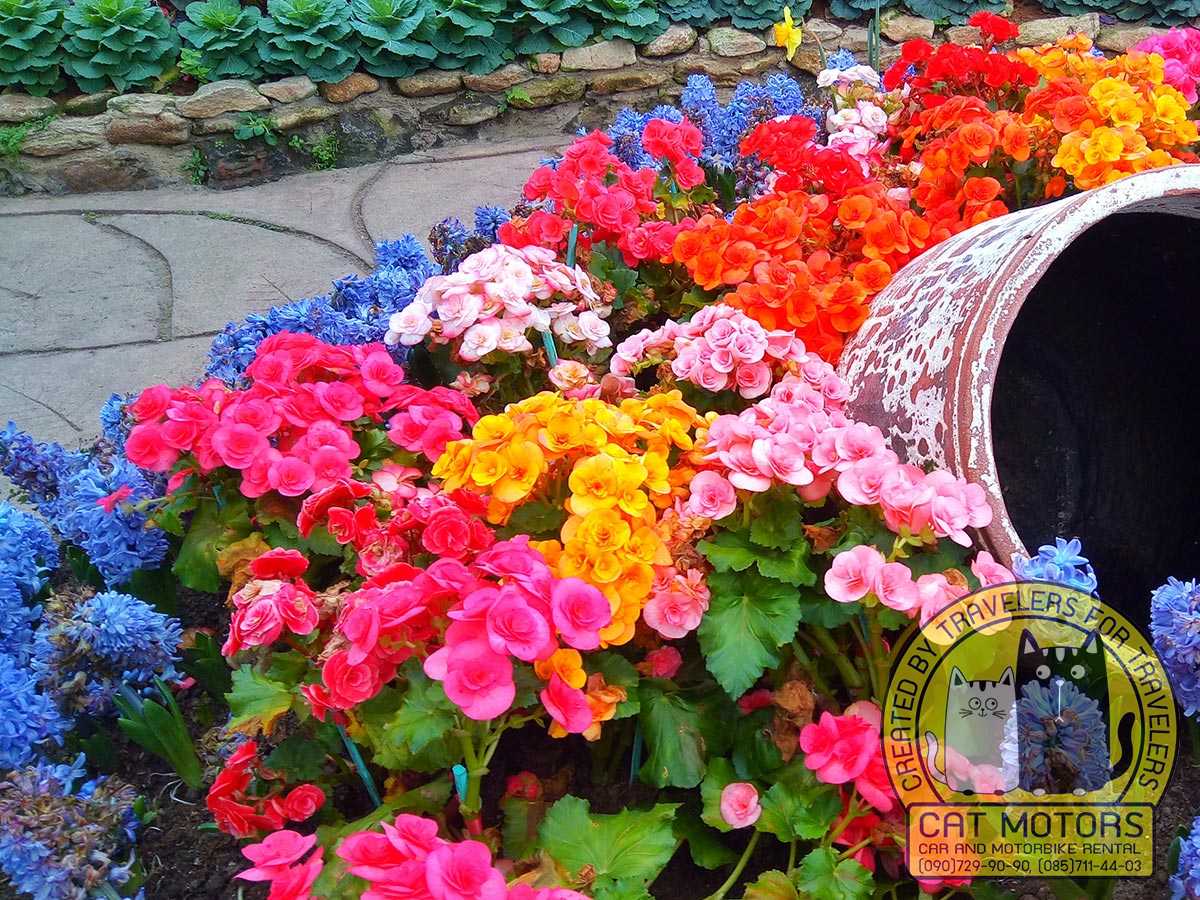
Unfortunately, the palace isn’t always open to the public because it is used by the royals and their dignitaries. Many tourists to the palace feel it is an anti-climax, especially since no uninvited guests are permitted inside the buildings. However, it is a pleasant stop-over if you are exploring the area and have some time.
FAQ
The Bhubing Palace was built in 1961 as a winter residence for the royal family of Thailand. King Bhumibol Adulyadej (Rama IX) was the primary initial occupant.
The Bhubing Palace is a wonderful example of traditional Thai architecture with elements of modernity. The main building, built on stilts, is adorned with an elegant multi-tiered, high-pitched roof. The buildings are constructed predominantly of teak, lending a rich and warm atmosphere.
The palace is significant as a symbol of the royal family’s connection with the people. It is also a place where many state visitors have been received, thereby playing a significant role in the diplomatic history of Thailand.
The Bhubing Palace is typically used by the Thai royal family during their annual visit to the northern part of the country. The family uses the visit as an opportunity to interact with local residents and understand the regional issues better.
The gardens of Bhubing Palace are renowned for their wide variety of plant species, including beautiful roses, begonias, and orchids. It also features a large greenhouse where exotic plants are grown.
The Bhubing Palace mainly functions as a royal residence during the winter months. While specific ceremonies are not typically open to the public, the annual visit of the royal family is a significant event.
The Bhubing Palace is open from 8:30 am to 4:30 pm. However, during the royal family’s visit in the winter months, the palace is closed to the public.
From Chiang Mai, you can take a shared songthaew (red truck) or arrange for a private taxi. It’s roughly a 45-minute drive, located up in the hills above the city.
While there aren’t official guided tours offered by the palace, many local tour operators in Chiang Mai provide trips to the palace as part of their packages.
Photography is allowed in the gardens and outside buildings. However, it’s generally restricted inside the buildings in order to preserve the integrity of the interiors.
The entrance fee for foreigners is around 50 Thai Baht per person. As of my last visit, there were no discounts for students or senior citizens. But prices and policies may change, so it’s always good to check their official website or call ahead.
Embark on an adventure through Northern Thailand with our extensive travel guides, showcasing the best scenic routes and local highlights. Start by exploring our motorbike rental in Chiang Mai homepage. Don’t forget to review our terms and conditions for a smooth rental experience. With these resources, you can confidently explore mountain trails and charming villages.
Our travel advice sections provide additional tips on how to stay safe and enjoy your trip to the fullest. Discover the best times to visit popular attractions, experience local festivals, and handle different road conditions. These tips will make your journey richer and more enjoyable. Join us in exploring the breathtaking landscapes and vibrant culture of Northern Thailand, ensuring a safe and memorable adventure.
- Author: Krit Sorenser
- Updated: 31/08/2025
- No Comments
